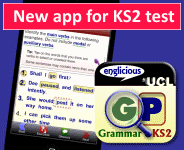An Introduction to Genre
Activity 1
Writing is an activity by which we achieve different goals. There are so many different types of text, we give the different types their own names. The names we give to different texts are called genres.
What kind of written or spoken text would you find the following sentences and phrases in? Give an answer for each one.
- 10 grams of frozen peas.
- Nadal serves Shapovalov backhand crosscourt.
- There are three reasons why the voting age should be lowered to 16.
- Biscuit throwing festival cancelled after becoming too popular.
- Once upon a time there were a brother and sister called Nicholas and Nicole.
In the starter activity you might have recognised the sentences or phrases as belonging to:
- Recipe
- Tennis commentary
- Essay or speech
- Newspaper headline
- Story
Activity 2
To better understand how genre is constructed, it helps to break it down into two aspects:
1. discourse structure and
2. register.
What do you think these two terms mean?
Genres have a structure of elements or parts in a certain order. We can call this discourse structure.
We use language differently in different genres: some kinds of words and grammar are more frequent in one genre than another. These are referred to as features of register.
Let’s take an example of a dictionary.
What elements of discourse structure and register can you see in this extract from a dictionary?
- cas-ta-nets /| kæstə |nets/ noun [plural] a Spanish musical instrument consisting of a pair of small round pieces of wood or plastic held in one hand and brought together quickly to make a CLICKING sound, used especially by dancers
- cast-a-way /| kɑstə |wɛɪ/ noun [C] someone whose ship has sunk and who is left on an island or beach where there are no other people
The discourse structure is:
- HEAD WORD (divided into syllables)
- PRONUNCIATION
- WORD CLASS
- MEANING[S]
And the larger discourse structure of a dictionary is a list of head words in alphabetical order.
We can also find different language or register features in these dictionary entries.
- The head words are in bold and have no determiners (a or the).
- The pronunciation doesn’t only use ordinary letters but also some phonetic symbols e.g. ə, ɛ, and | for stress.
- The word class may be presented in a different, narrow font.
- There is an abbreviation in brackets after the word class, [C] for countable, [U] for uncountable.
- The meaning for these nouns is not provided as a complete sentence, but just a noun phrase, with no full stops at the end.
Let’s take a look at another example.
Activity 3
What does the word 'blurb' mean?
What does a blurb normally include?
Can you find an example of a blurb in the classroom?
We'll look at some examples of blurbs together. For each one, identify the discourse structure and register.
Blurb A)
What genre of book is this blurb for? What discourse structure and features of register can you see?
- With peek-a-boo windows, bright
colors and simple guessing rhymes,
this playful board book is perfect
for curious babies and toddlers.
“... an instant hit.” – Child
Blurb B)
What genre of book is this blurb for? What discourse structure and features of register can you see?
- The story of The Boy in the Striped Pyjamas is very difficult to describe. Usually we give some clues about the book on the cover, but in this case we think that would spoil the reading of the book. We think it is important that you start to read without knowing what it is about.
“Stays just ahead of its readers before delivering its killer punch in the final pages” – INDEPENDENT
Blurb discourse structure possible answers:
- Short paragraphs
- Summary of the plot, setting and characters
- Quotes from journalists or famous people
Blurb features of register possible answers:
- Declarative sentences
- Present tense
- Personal pronouns
- Inverted commas
Further activities:
- Compare the two blurbs. What features are the same and which are different? Why do you think that is?
- Look around the classroom for more examples of book blurbs. What features can you identify? How do they relate to the genre of the book?
Welcome!

Englicious is totally free for everyone to use!
But in exchange, we ask that you register for an account on our site.
If you’ve already registered, you can log in straight away.
Since this is your first visit today, you can see this page by clicking the button below.
- Printer-friendly version
- Log in to view or leave comments

